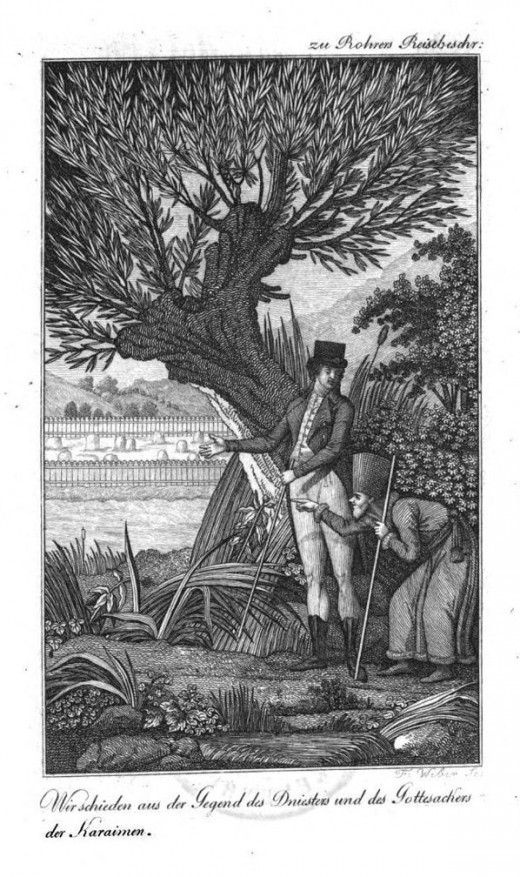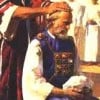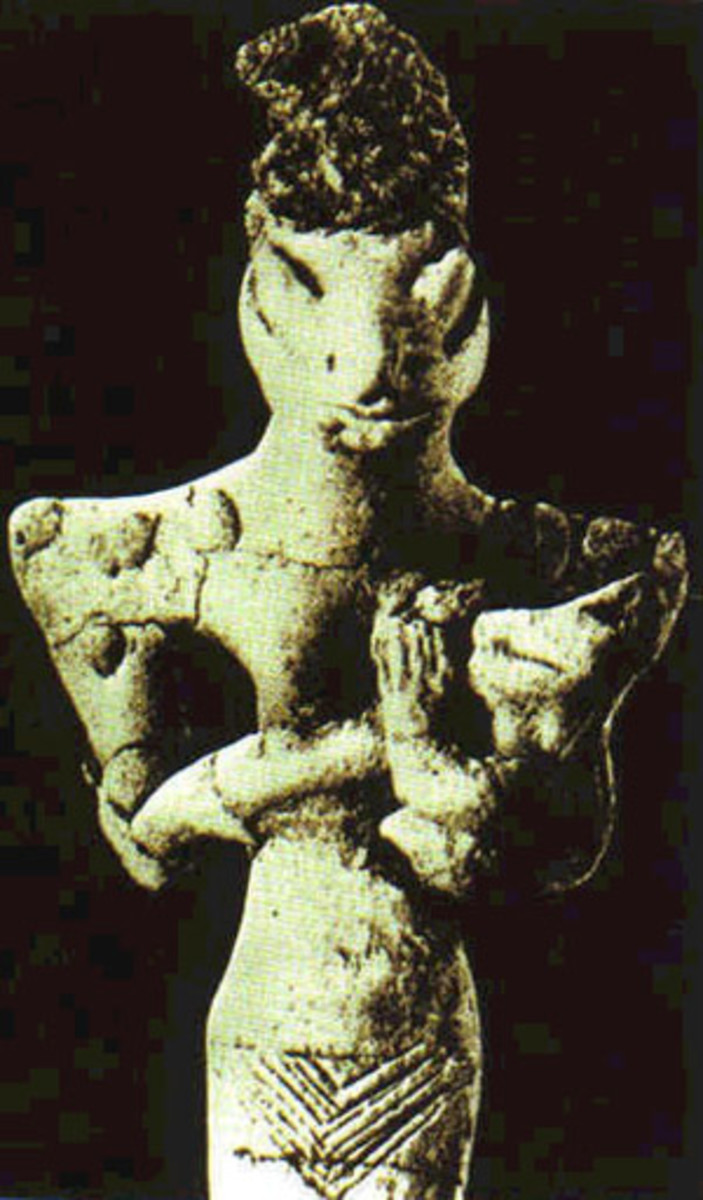Karaites in Galicia Part 3
As I had mentioned in the previous article, (http://hubpages.com/hub/Karaites-in-Galicia-Part-2) I would continue the discussion with the agricultural aspects of the community. Because this was a key identifying point between the Karaite and the Rabbanite communities. Whereas amongst the Rabbanites you did have some members engaged in agriculture, much of their culture was an urban society and therefore they contracted the major component of their food sources to the Gentile community that conducted the operation to the standards required by the Rabbanite community in order to be certified Kosher. Much in the same way that major corporations today will adhere to specific rules in order to provide their products to the Jewish community. In contrast the Karaite community was heavily engaged in its own farming and draughting. So not only was it self-sustaining where there were large populations of Karaites, the cartage business was also recognized as a major component of Karaite industry. It was a common finding that the Galician Karaites were similarly engaged in agriculture and in livestock. The latter especially true when it came to horses. This was very true in my family where horses played a major role, some members being in the Austrian cavalry, such as Dov (the Bear) Goldenthal, an officer of the Hapsburg Empire, all the way to my grandfather, renowned for his love of the horses, but that had to do more with his habit of playing the ponies than ever raising them. Even in my own direct family, horses have played a major component in our lives and I personally love being around them and caring for them and there does exist a rapport with this particular animal that has been suffused into my innate abilities.This love of animals, livestock and horticulture was a major component of Galician Karaite life, primarily because we were permitted to own land, but also because we delighted in working the land. And as mentioned, this was a major difference between ourselves and the Rabbanite Jews that inhabited the same vicinity but migrated into urban environments.

Community Characteristics
In the first article, I mentioned that some of my brethren from the other Karaite communities failed to appreciate that those of us from Galicia were different. Perhaps it was the fact that these differences led to the accusation in the past that we were more Rabbanite than Karaite, but language, clothing, customs should not be the defining aspect of a Karaite believer. The fact that we rejected the Talmud, and in most cases the Kaballah, though I cannot say there weren't a fair number that still practiced it, should be the defining feature that we were as much Karaite as anyone from Lithuania, Crimea or Egypt.
It was recorded by Rohrer that the Karaite Jews of Galicia preferred to speak Polish and in fact spoke Polish almost identical to the Christian Polish population. This should not be surprising because one of the more historical manuscripts from the L’vov community is written in perfect Polish and is a record of how the community arrived in Galicia. Mastery of languages was a major component of the community and the reason why my third great grandfather Jakob Goldenthal could go from having no formally accredited education in Galicia to the position of Professor and Director of Lingusitics and Oriental Languages at the University of Vienna. In the particular story from the L'vov manuscript, it says in 1243 Khan Batu concluded a peace treaty the Croatian King, Daniel. Accordingly, the King would permit 100 Karaite families to leave Crimea for Galicia. It was King Daniel’s intent that these Karaites would increase the commerce and trade between his kingdom and the Eastern lands of Russia. As mentioned in a previous article, many of these legends of origins have been debunked as this story was an 18th century production with no reference to an earlier document that it may have sourced. What is important though is that this document was written purposely in Polish as it was considered the common language or the Lingua Franca of the Galician community and was intended for wide circulation outside the community into the general public. Hebrew was reserved for religious documents but the common everyday language was not the Tartar derivative used by other communities but Polish. And in those communites within what is now known as Romania, it was Romanian. It had nothing to do with assimilation but the fact that languages were important for our commercial dealings as unlike the Rabbanite communities we did not try to separate ourselves from the people among who we existed.
Some of the best known Karaite physicians in the history of Poland were Ezra Nisamowicz, who looked after the royal family, and Elie del Medico, the personal physician of the dukes of Radzivill, both in the seventeenth century. Karaite learning and education was well respected. Between 1483 and 1487 students from Lutsk studied in Istanbul with Elijah Bashyazi and it was this close relationship with Istanbul that caused the Karaites of Poland to accept most of the innovations of the Bashyazi clan, such as the lighting of Sabbath candles, the beginning of the annual cycle of Torah readings in the month of Tishrei, instead of Nisan, the arrangement of astronomical tables to assist in fixing the first day of the month and the year (calendation). But just because we lit Sabbath candles and had different practices that were more common to the Rabbanites did not in any way make us any less Karaite. Essentially the lighting of the candles was so we didn't sit in the dark and therefore the lighting, done without blessing was performed prior to sunset and therefore different from our Rabbanite brethren. Although we avoided the word Karaite itself to describe ourselves since the similar sounding word in Polish meant "black dog", we preferred instead to call ourselves "Karainim", with a Hebrew ending.
I remember one of my senior family members in Israel many years ago describing some of the physical characteristics that had been described to him about the community when he was a young boy. He remarked that unlike the Rabbanites, we would either be beardless or if we did wear a beard it was often short and well trimmed. And he spoke of our love for fur on our clothing. Neck lines, cuffs on sleeves, and hems of our robes often had some form of fur lining. Apparently this was common and popular with the Polish population and we copied their dress in that manner. Very different from the Crimean dress of pantaloons or skirt, with linen shirt and vest, or the Lithuanian custom of wearing a heavy coat over a single garment that went from neck to ankle. Our tzitzit or fringes were usually worn as an undergarment and were not seen externally. And he spoke of high peaked hats which I couldn’t imagine because all I could think of was either turbans as customary in Arab lands, or the Karaite Fez worn in Egypt. It wasn’t until I found the enclosed engraving of the Austrian aristocrat, Rohrer’s visit to the Karites in Galicia 1804 that I finally understood what he was describing. In this particular drawing, the Karaite is the Hacham, Shalom ha-Chelitzi. The hat, I have no idea what it is supposed to be representing. it actually looks more Aztec or Mayan than anything one would see amongst European or Russian communites. Though hard to distinguish, Chelitzi does have a short cropped beared, extremely well trimmed and his hair is worn short. The garment is fur trimmed just as my relative described. Tzitzit are not visible though there is an elaborate sash worn around the waist. In the picture, Chelitzi has taken Rohrer to the cemetary but it appears that for some reason he prefers to remain hidden in the bushes.
This particular etching provides a glimpse into the community, the characteristics and our free association with the nobility of Austria, a factor which played a major role in my family's success in the Russian and Austrian Hapsburg social circles beginning in 1843. But like all histories of communities that have their heyday, they usually succumb to time and the Galician community was no different. Its development of its own unique customs and its subsequent demise will be discussed in the next article.
Avrom Aryeh-Zuk Kahana



